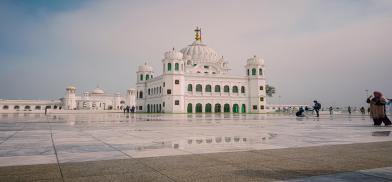Covid effect: Shortage of turbans and kirpans leave Pakistani Sikhs frustrated
Sikhs in Pakistan are facing an acute shortage of turbans and kirpans – the cultural symbols of Sikhism – as they are unable to import them from Amritsar, India due to the Covid pandemic related trade restrictions and suspension of religious tourism

Sikhs in Pakistan are facing an acute shortage of turbans and kirpans – the cultural symbols of Sikhism – as they are unable to import them from Amritsar, India due to the Covid pandemic related trade restrictions and suspension of religious tourism.
The turban and kirpans (curved daggers slung at the waist) are among the Five Kakars - or five K’s - physical symbols worn by initiated Sikhs. These are kesh, or naturally growing the hair, carrying a kirpan, wearing a kara which is a steel bracelet, keeping a kangha which is a wooden comb, and wearing kachha or undergarments
Since there are not too many Sikhs in Pakistan, the production of these articles of Sikhism is very low.
Though textile is Pakistan's largest manufacturing industry, it does not produce the full voile fabric for turbans which is preferred by the Sikhs as it is easy to tie into layers, and has neither slits and nor does it loosen quickly.
Punjab Governor’s Coordinator Sardar Pawan Singh Arora seemed frustrated talking to the Express Tribune.
"We cannot even buy turbans online because there is no courier service between Pakistan and India."
For decades, Pakistan’s Sikh population has relied on religious tourism, and friends and relatives visiting Pakistan to procure turbans and other items.
The Kartarpur Corridor - the newly constructed 4.7 km visa-free border crossing connecting the Gurdwara Darbar Sahib in Pakistan, the last resting place of Sikhism founder Guru Nanak who lived there for 18 years until his death on 22 September 1539, to the border with India - had served as an alternate avenue for acquiring religious items of Sikhs through visiting pilgrims. But that has also been shut for over a year in efforts to curb the virus transmission.
Appeals from Sikhs across the border to end the prolonged closure at the Indian side have gone unheard as its government battles with a rising Covid death rate.
Sardar Bishan Singh from Lahore, associated with the textile business, said the 'dastar' (Sikh headgear) they are using now were either part of the last batch that arrived from India or subsequently arranged through friends. According to Bishan Singh, apart from the religious headwear, Indian sarees and lehengas have been equally hard to source since the border closed.
Talking to the Express, Bishan Singh said, "We are trying to produce essential items for the Sikhs locally so that they do not face such problems in the future."
A variety in turban colors also plays a vital role in acquisition from India as the colors found there are considered attractive.
Kalyan Singh Kalyan, highlighting the need for a vast color palette, says, "Sikh youth and men wear matching turbans with shirts, but blue, saffron and black turbans are worn on special festivals. Sikhs in Pakistan wear green turbans on national holidays."
(SAM)









Post a Comment